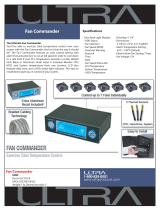
5
GB
Precautions
Chapter
Chapter 1 Overview
1
Overview
Precautions
On safety
• Operate the unit on 200 – 240 V AC, 50/60 Hz (SRX-
R110), or 100 – 240 V AC, 50/60 Hz (SRX-R105).
• Should any liquid or solid object fall into the cabinet,
unplug the unit and have it checked by qualified Sony
personnel before operating it further.
• Unplug the unit from the wall outlet or set the power
switch to the lower position if it is not to be used for
several days.
• To disconnect the cord, pull it out by the plug. Never pull
the cord itself.
• The wall outlet should be near the unit and easily
accessible.
• The unit is not disconnected from the AC power source
(mains) as long as it is connected to the wall outlet and
the power switch is set to the upper position.
• Do not look into the lens while the lamp is on.
• Do not place your hand or objects near the ventilation
holes. The air coming out is hot.
• Have at least four people carry and handle the projector,
to avoid accidents or injury.
• Avoid using an extension cord with a low voltage limit,
as it may cause short-circuiting and physical injury.
• To carry the projector, be sure to use the carrying
handles. Do not hold other parts of the projector,
especially the lens, nor catch your finger between the
handle, floor, and the projector.
• Do not catch your finger between the unit and surface of
the floor when moving the projector installed on the
floor.
• Be careful not to catch your finger in the cooling fan.
On installation
• Allow adequate air circulation to prevent internal heat
build-up. Do not place the unit on surfaces (rugs,
blankets, etc.) or near materials (curtains, draperies) that
may block the ventilation holes. Leave space of more
than 100 cm (39
3
/8 inches) between the wall and the
projector. Be aware that room heat rises to the ceiling;
check that the temperature near the installation location
is not excessive.
• Install the projector on the floor or hang it from the
ceiling. Any other installation causes a malfunction such
as color irregularity or a shorten lamp life.
• Do not install the unit in a location near heat sources
such as radiators or air ducts, or in a place subject to
direct sunlight, excessive dust or humidity, mechanical
vibration or shock.
• To avoid moisture condensation, do not install the unit in
a location where the temperature may rise rapidly.
On illumination
• To obtain the best picture, the front of the screen should
not be exposed to direct lighting or sunlight.
• Ceiling-mounted spot lighting is recommended. Use a
cover over fluorescent lamps to avoid lowering the
contrast ratio.
• Cover any windows that face the screen with opaque
draperies.
• It is desirable to install the projector in a room where
floor and walls are not of light-reflecting material. If the
floor and walls are of reflecting material, it is
recommended that the carpet and wall paper be changed
to a dark color.
On preventing internal heat build-up
After turning off the power, the cooling fan runs for about
10 minutes while the STATUS LAMP indicator flashes in
green.
Caution
The projector is equipped with ventilation holes (intake) at
the front, upper side and right side, and ventilation holes
(exhaust) at the rear and upper side.
Do not block or place anything near these holes, or internal
heat build-up may occur, causing picture degradation or
damage to the projector.




















